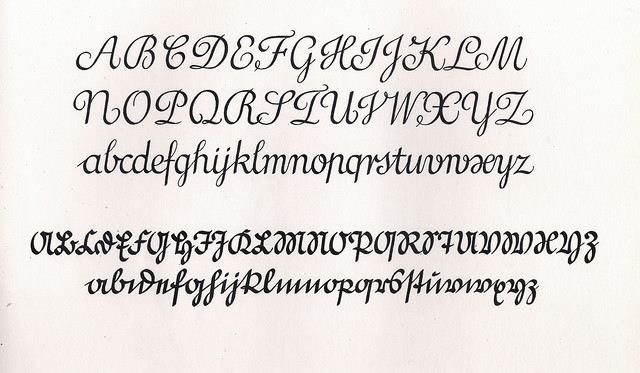
And yes, it is remindful of the capital N in ‘French Script’ style. More examples:





The italic w in TypeTogether's Marco is also asymmetrical, though the first part is not so n-like as in some of the above examples.
Somehow this reminds me of the startling difference in construction pattern between the roman and the italic lower-case yat (U+0463).
No, this is indeed a variety of the Cyrillic yat. In late 19th – early 20th century this form, which looks like a П + Ь ligature, existed even in u.c.But was that not the æ Maxim? Now I am curious. I was (likely mis-informed) that it was an acceptable Germanic form.





If I don’t remember incorrectly—it’s been a while—, I indeed learned this type of w in school. I started elementary school in Switzerland around 1991. Schulschriften.ch’s CH3 seems the most familiar model to me, with the x with two loops, the monocameral uppercase A, and the closed 4.Florian Hardwig said:David, as Christian has mentioned, this form is present in several of the traditional “Schnüerlischrift” handwriting models taught in Swiss primary schools, see schulschriften.ch. It was also present in Austria’s school script as defined in 1969. This model has been replaced in 1991.
Albert_Jan_Pool said:I do not think that it are the stems by which this kind of w can be best distinguished. Please take a look at these w’s here: https://www.flickr.com/photos/ninastoessinger/4712988808/ Or have a look at ITC Bauhaus. In these designs, the stems of w are upright instead of diagonal, still they do not resemble the style discussed here.
Wow, it's been a very long time since I was a grad student in the '90s and last saw that primer.Frode Bo Helland said:Reminds me of the hwair: